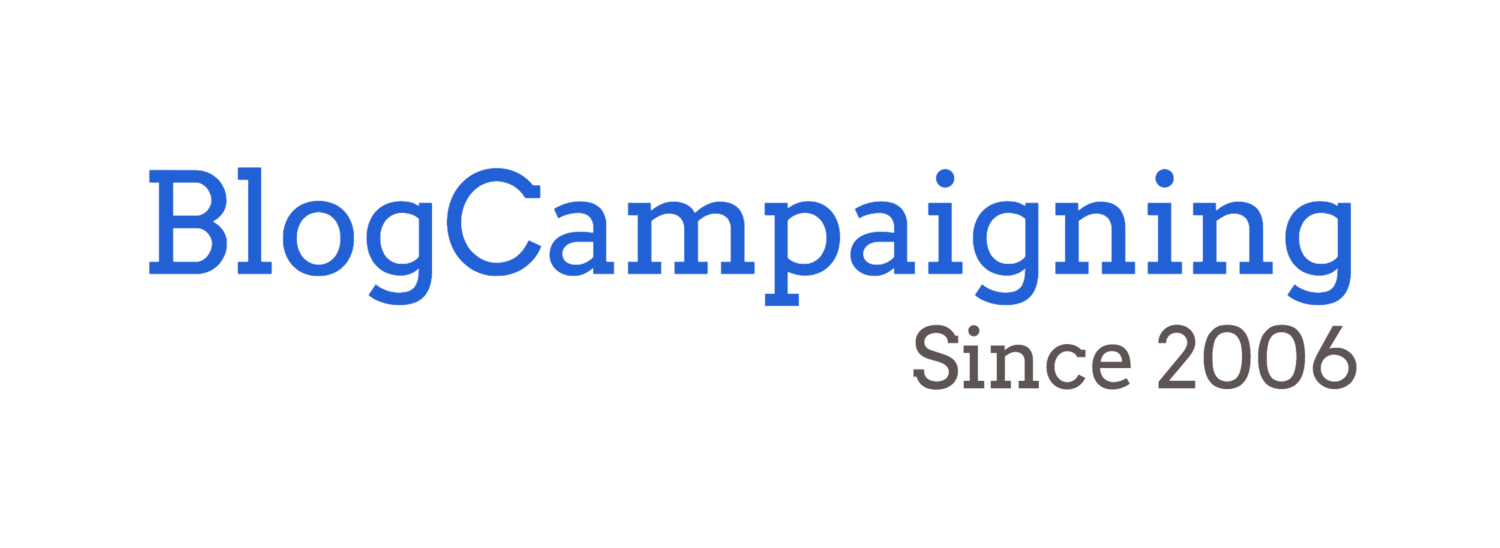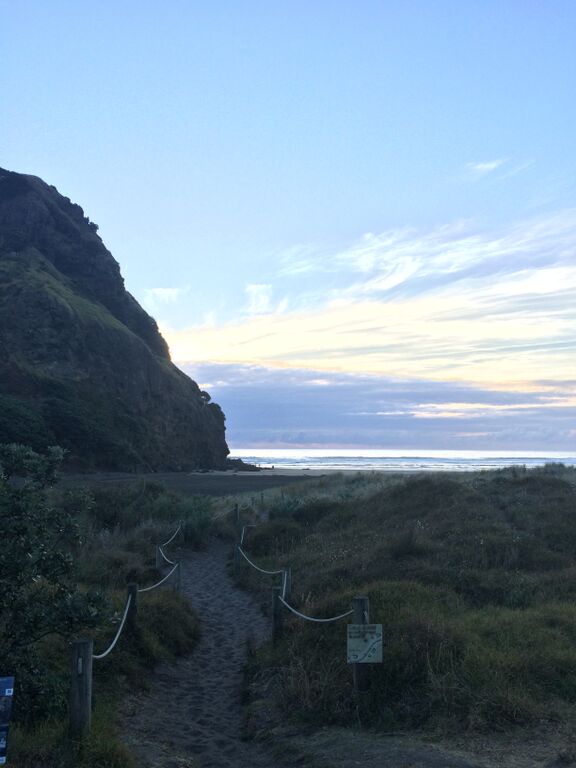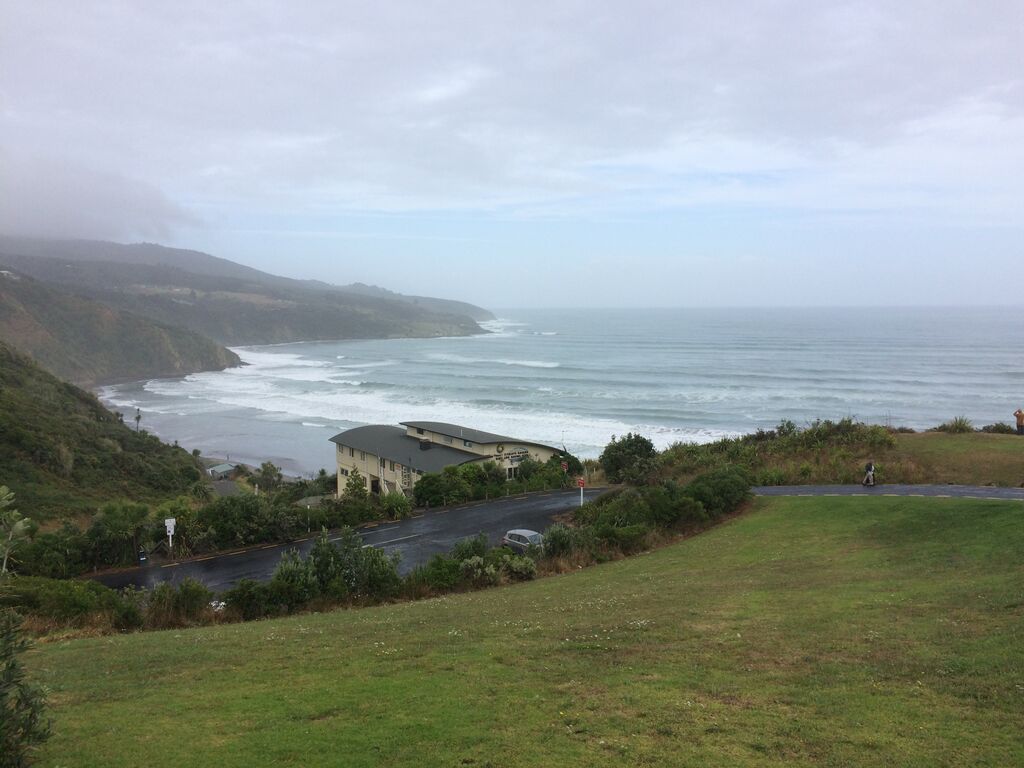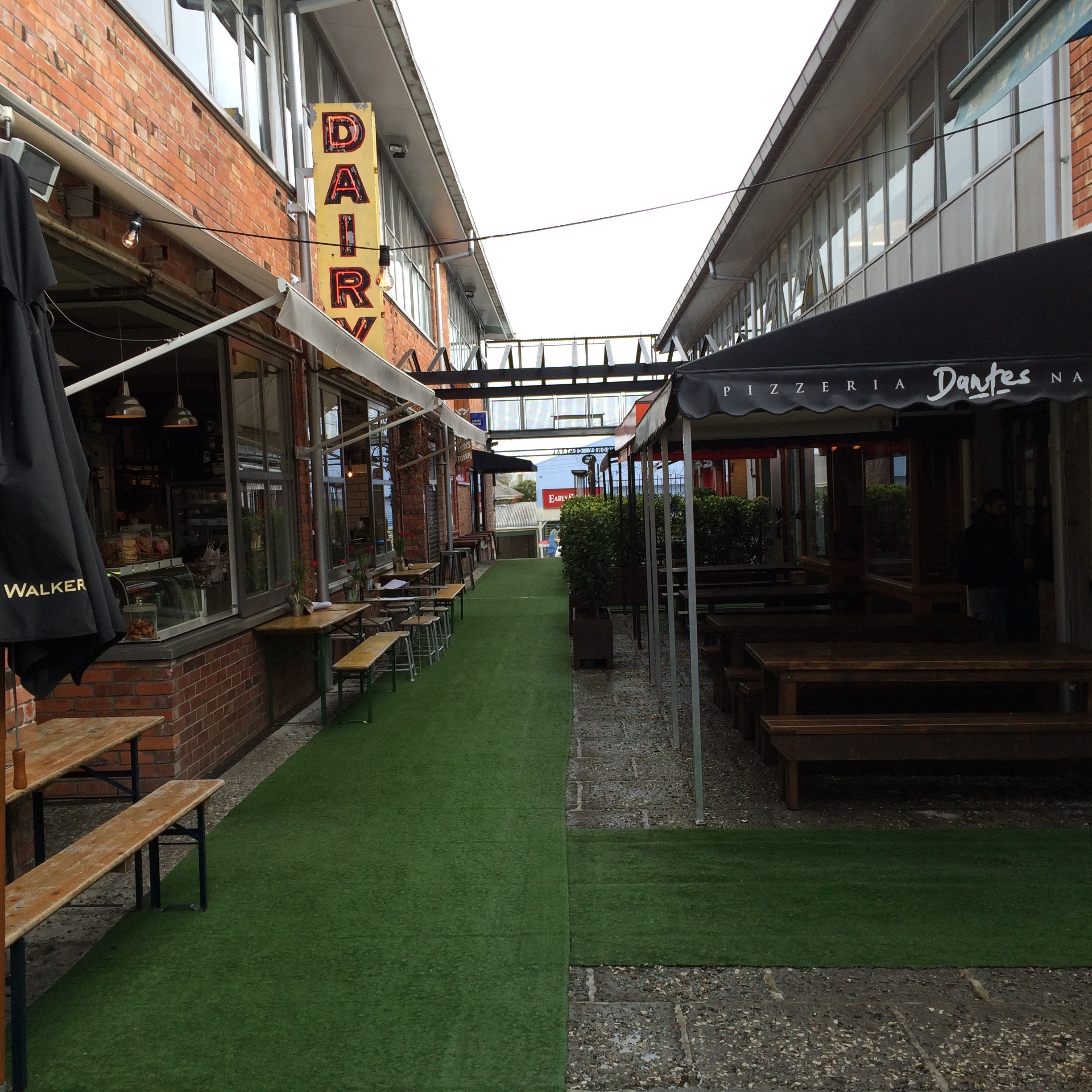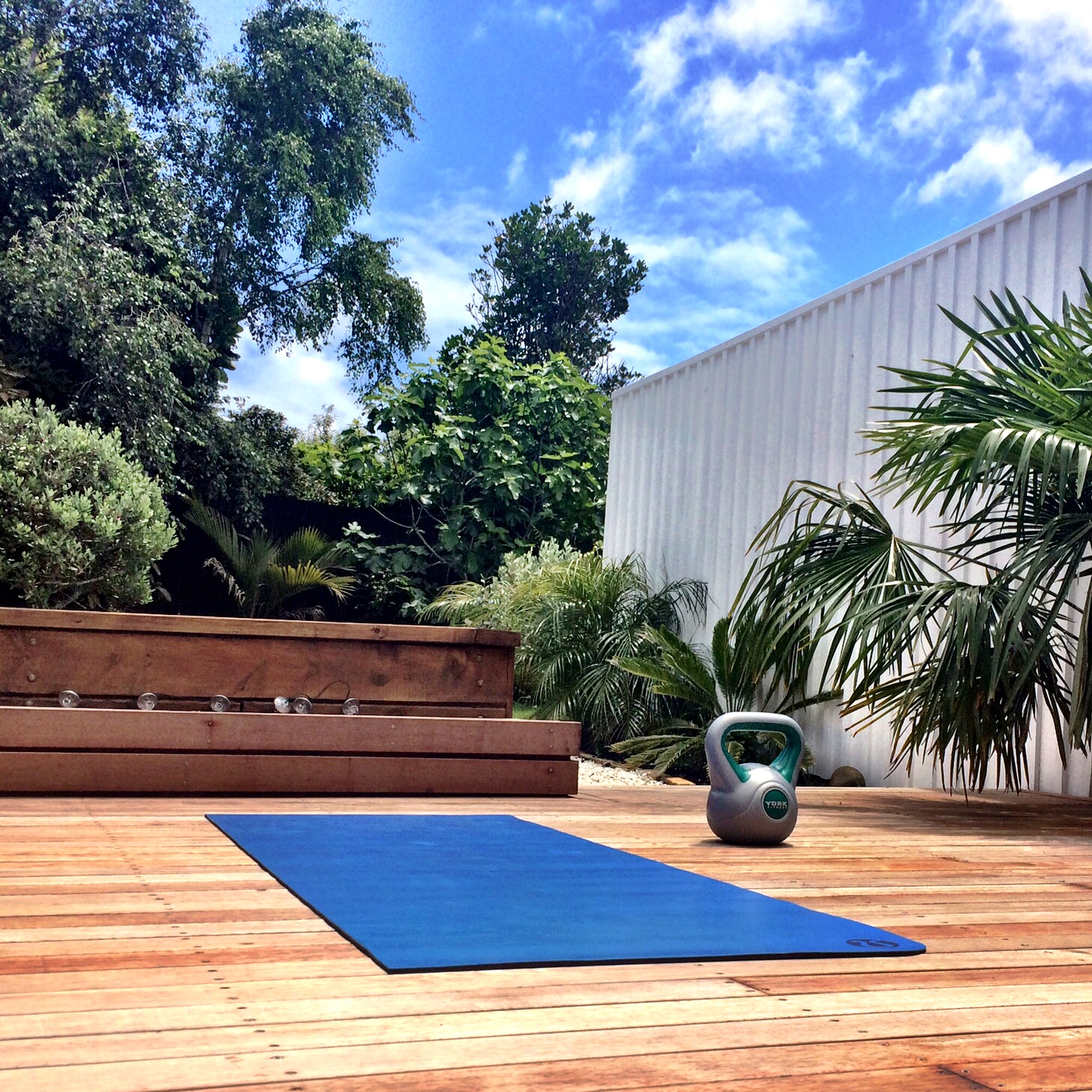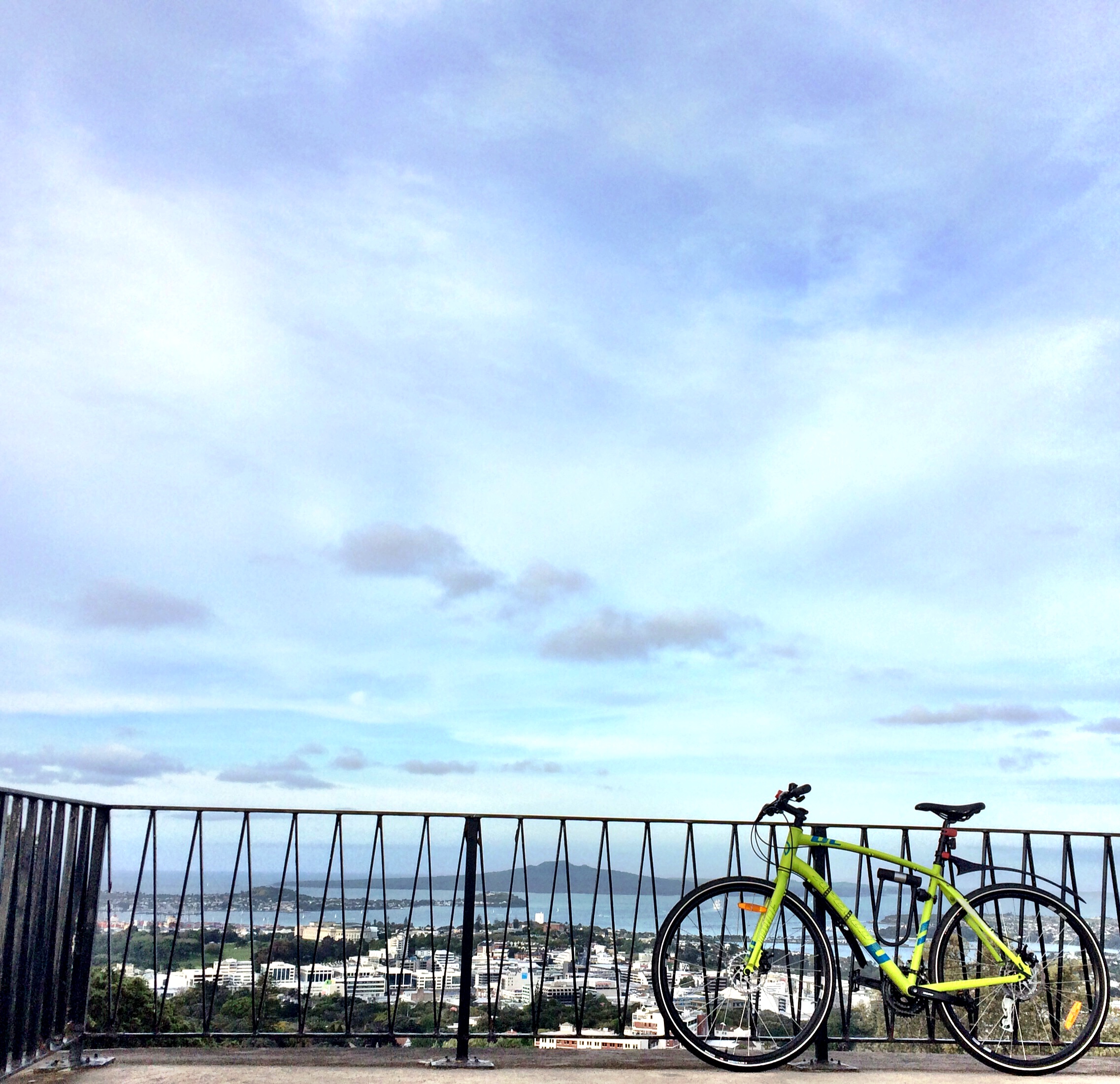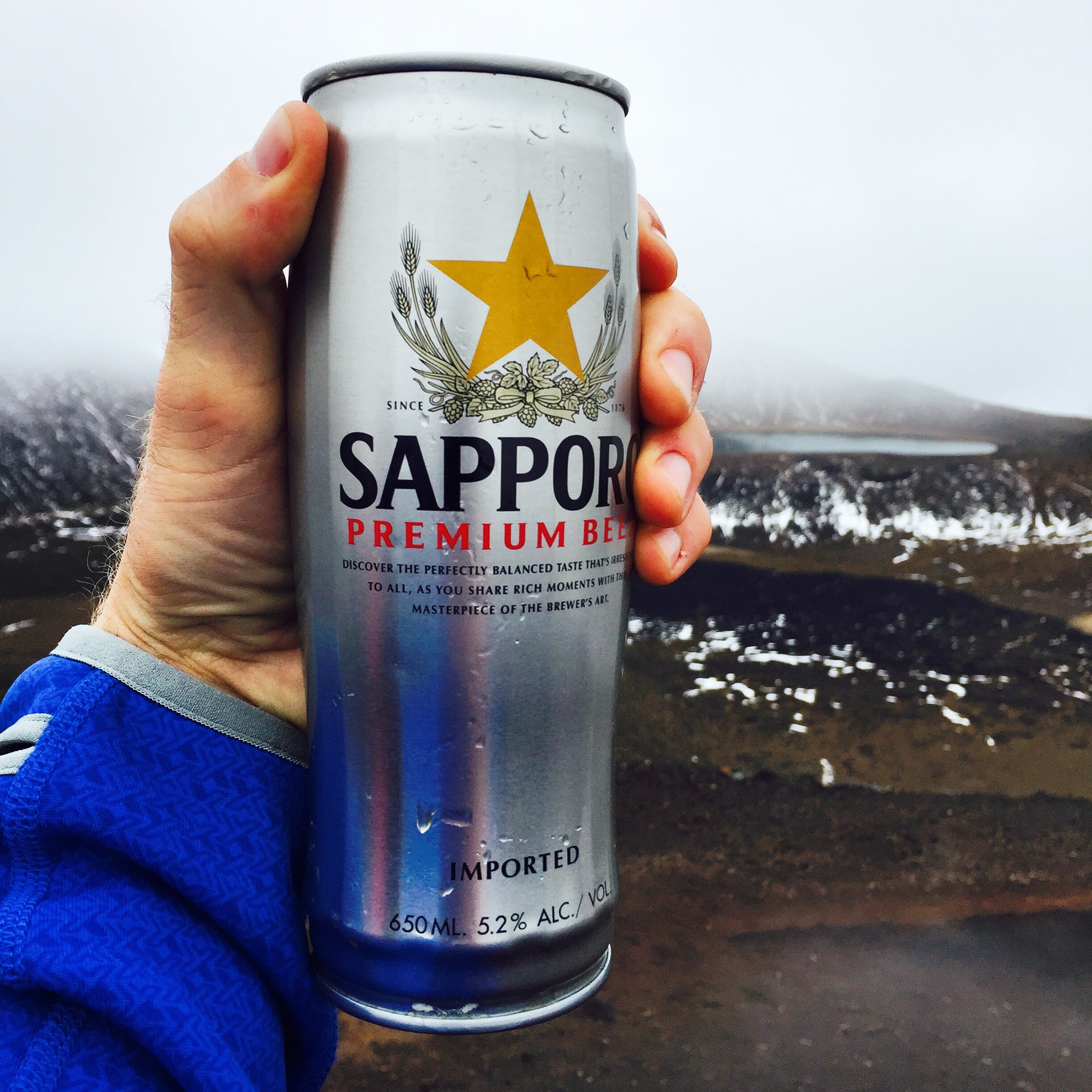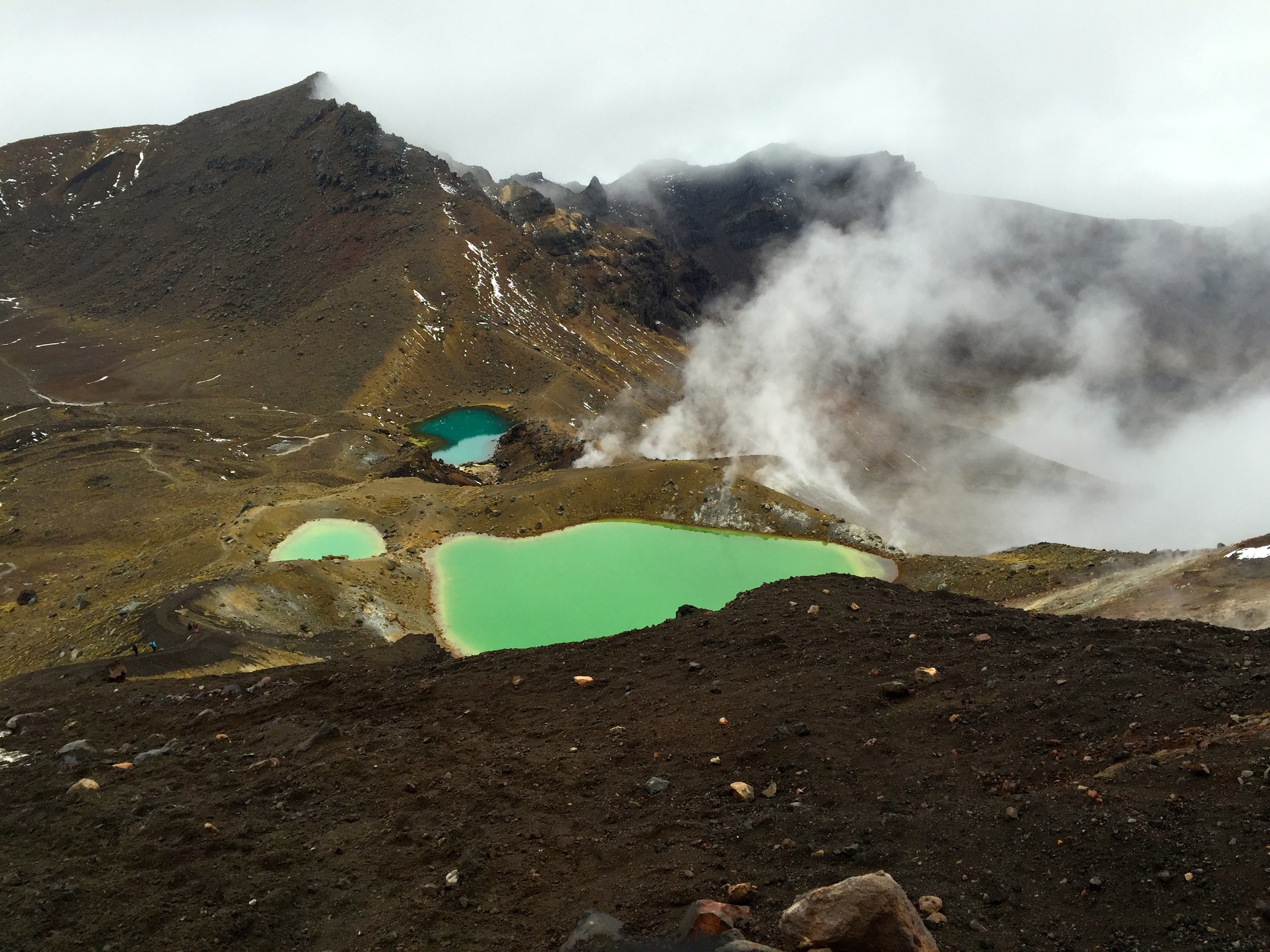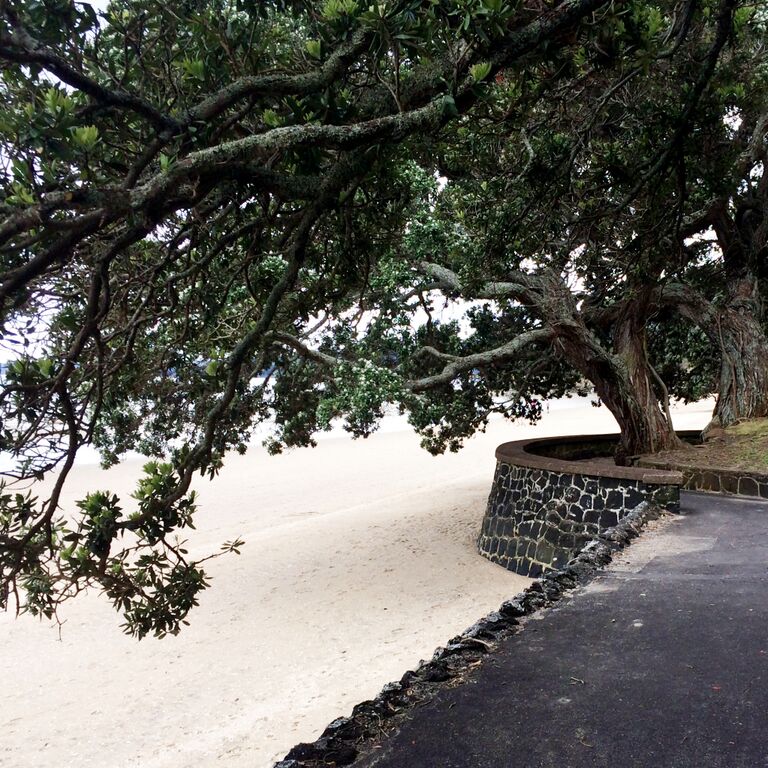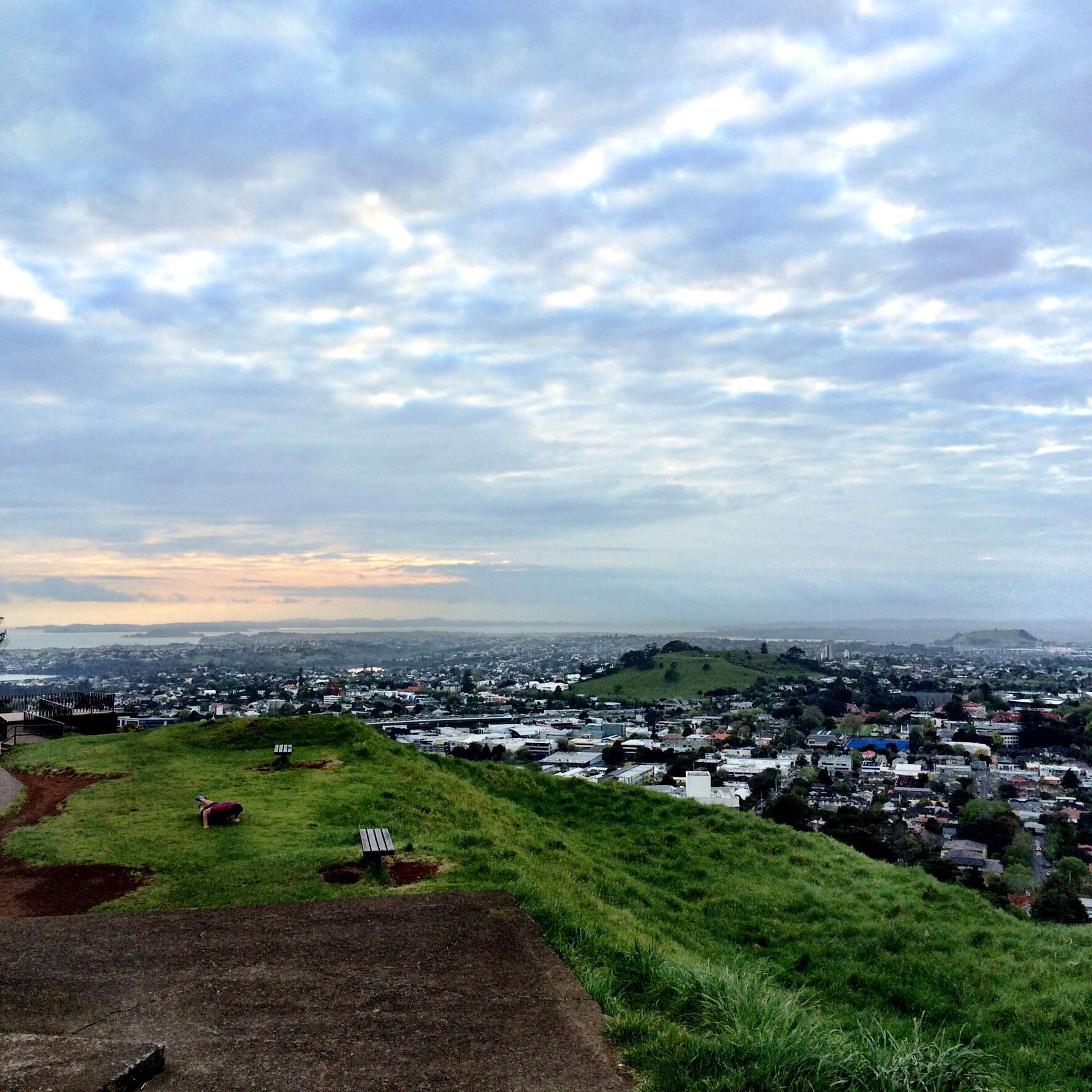Hiking Tasmania: Quamby Bluff
These photos are all from the Quamby Bluff hike in central Tasmania. It's only about 7km, but there are a lot of steep sections and there is one section that requires you to scramble up a scree slope. The hike is totally worth it, though,
If you liked these photos, you might also like photos of a few other hikes I went on:
Haleakala, Maui: Re-entering the House of the Sun
My Listserve Email: A Story of Surfing and Friendship
The Listserve is an email list with about 22,000 subscribers. Everyday, one of those subscribers "Wins" it, and they get the opportunity to send an email to everyone else on the list.
The rules are simple: 600 words, max, text-only, no links. Otherwise, you can pretty much write about whatever you want.
Last week, I won the Listserve. The email I wrote is below.
When I first got the email saying I’d won The Listserve, I asked my friends in New Zealand what I should write about.
“Write about us,” Johannes said.
And so here we go.
I met Johannes, Gui, Woonie and Jim at the advertising agency we worked together at in Auckland.
On my first day of work, I was taken on a tour of the office. When we went by Jimbo and Woonie’s desks, the two of them were watching a surfing video. I asked the person giving me a tour to leave me there, and within two weeks we were out surfing the coasts of New Zealand together.
A month or so later, Gui and Johannes started working at our agency, and they joined us for surf missions.
At first, I think it was a friendship of convenience and sympathy: I didn’t have a car at the time, and the other guys saw how badly I wanted to make it out to coast to surf so they gave me a ride.
But you can only spend so many long car rides down twisty, New Zealand roads and so much time braving the icy New Zealand water with people before they became more than just work colleagues.
Some of the best days of my life were spent in those New Zealand waters with those guys.
Like the time Jimbo drove us up to Pakiri Beach and we had a section of an amazing little beach break all to ourselves.
Or the time Woonie met me up at Piha on my birthday, and I caught one of the biggest lefts of my life, then bailed on it, and came up out of the water to see Woonie laughing.
Or the time Johannes and i went down to Raglan for big, messy (but otherwise almost empty) waves for a Sunday afternoon.
Or the time four of us somehow managed to cram into Johannes’ car with our boards to surf North Piha, right next to the cliff, and I dropped in on Johannes (sorry, buddy).
Or the time Gui and I went out on the coldest day of the year and had the entire beach to ourselves. (the waves weren’t great, but it was still an amazing experience).
Or any of the other times where we paddled out into the ocean off the coast of New Zealand to watch each other catch waves, or to disappear from each other’s sights when the rip was strong.
Or the Friday nights spent talking on What’s App about where the waves were best, and how early in the morning we’d want to leave.
Or on the Monday mornings at work, when we’d talk about the waves we caught over the weekend, and would start looking at the forecast.
You can only spend so many days like that, so much time spent seeing the smile on someone’s face after they’ve caught an amazing wave, or having them see one on yours, and not consider them friends.
So there you go, Johannes. I wrote about you guys. I miss you dudes and hope we connect for a surf mission again soon.
I guess if there was a moral to this story it would be to enjoy the moment.
Or maybe that the friends you make today will be your friends for life.
Or maybe that you should just get up early to go surfing. Preferably with some good friends.
-Parker
Sydney
PS: Message me if you're in Sydney and want to go for a surf.
Re-Entering The House Of The Sun
The photos above are of Haleakala, a volcano on Maui (except for the last photo, which is of the West Maui Mountains).
It's an excellent, if difficult hike. Check the weather before you go.
Goodbye Auckland, Hello Sydney
if you've been following my life on either Instagram or LinkedIn, you might have seen that last month I left Auckland to move to Sydney and join DDB there as a Senior Business Director.
I've never had such a hard time leaving a job as I did when I said goodbye to the team at DDB New Zealand. They are an incredibly talented and passionate bunch, and I was lucky to have been a part of the energy that I felt for the year I was there. I'm pretty sure the world will see some amazing creative projects come out of that office in the next few months to years on top of the great pieces that have already been seen. I'll miss the people there a lot.
But at the same time, I'm happy to still be in the DDB family here in Sydney. It's only been a (busy!) few weeks, and the Christmas holidays are around the corner, but I can tell 2016 is going to be big.
Below are a few photos of the DDB Sydney office - it's a really interesting space and a great place to work.
Waterfalls, Rain Forests and Sand Dunes: Another Amazing New Zealand Hike
Yesterday, I hiked from the Cascades Kauri Park through to Bethells Beach, and back. I think it was the Montana Heritage Trail for most of the journey, but I also think I went off that a little bit.
Highlights of the hike were the green rain forest, some massive inland sand dunes, a waterfall (that I wasn't expecting), and some great views of classic, rolling hills.
According to the iHealth function on my iPhone, I walked about 30km and the entire journey took me just under 5 hours. I'd highly recommend it if you've got a spare day in Auckland, as it's a great way to see some awesome and varied New Zealand scenery.
If you liked these hiking pictures, you might also like the ones I took last week when I hiked The Pinnacles or this post with more general pictures of New Zealand.
A Foggy, Moody Hike In New Zealand: The Pinnacles
Below are a few photos from a hike I did on the weekend called The Pinnacles. It's on the Coromandel Peninsula and is about a 90 minute drive from Auckland. You can find more info about it here. It was a misty day when I went so the views were great, but the conditions made the hike almost more interesting and mysterious. The first half of the hike was through jungle-like terrain that involved crossing back and forth over a stream and waterfalls, with swinging bridges and stepping stones. The second half was alpine hiking and bare rock faces.
The entire hike was about 20km round trip, with some seriously steep sections.
See more photos from my time in New Zealand here
Intel:Idea:Impact - Ad Blocking
We've been writing a series of emails around the office lately called Intel:Idea:Impact in which we look at some interesting insights or data (the Intel), share an example or two of this in real life (the Idea) and then tie it to a broader trend or business results (the Impact). The following is one that I wrote the other day on the topic of Ad Blocking.
Ad Blocking is not specifically a social media topic, but as it has the potential to affect almost everything we do, we thought it worth talking about in this week’s edition of INTEL:IDEA:IMPACT.
INTEL//
In the last few years, the advertising industry has championed personalised ads, better targeting, and retargeting but Internet users aren’t impressed: the 2015 Ad Blocking report estimates that 16% of the US population blocked ads in Q2 2015 and that the number of people using ad blocking software grew 41% year over year globally. The same report finds that as of June 2015, there were 198 million monthly active users of browser extensions that block ads. On the day it launched, an ad blocker app for iOS 9 became the top paid app.
That same report found that in 2015, ad blocking software has so far resulted in a loss of $21.8 billion for internet publishers, but it’s not a one-sided argument: research by the New York times found that ad-heavy websites are costing users in the form of slower load times, and that they can eat into a mobile phone user’s data plan.
IDEA//
Online publishers are meeting the challenge of ad blocking in a few different ways. The first ones to make a move were technology sites, whose regular readers were more likely to use ad blocking software.
The Guardian is appealing to users of ad blocking software with a message asking them to support the site by donating. Similarly, TechDirt allows users to turn off ads if they don’t like them, but also appeals to visitors to support the site by becoming a member.
Ars Technica, a technology news website, famously stopped showing any content to users with ad blocking technology five years ago in a failed experiment. More recently, they’ve integrated advertising more directly with the site so that while they still have ads, they’re not able to be blocked. The Washington Post, failing to learn from Ars Technica’s approach, has also recently blocked all of its content to anyone with ad blocking software.
While it’s a few years old, we really like Bud Light’s approach: They gave users an ad blocker that replaced banner ads with live-scores from the NCAA March Madness basketball tournament (suitably branded to become ads themselves).
IMPACT//
Getting users to pay for content that they’re used to getting for free is a lofty goal, and it probably won’t be a long-term solution to ad blocking software. Already, anti-ad-blocking companies like Secret Media are cropping up with purported solutions, and even Ad Block (the most popular ad blocking extension for the Chrome browser) has sold to an anonymous buyer and will start letting “acceptable” ads through.
The greater business impact beyond unseen ads and revenue loss for publishers has yet to be fully realised, but what’s obvious is that internet users are voting with their browser plugins.
The advertising industry has two choices: We can either continue to ignore this shift, or we can embrace change, and use this an opportunity to work more closely with internet users, content creators and publishers to create something that truly benefits everyone. As The Guardian reminds us in their take on the subject, “Necessity is the mother of invention.”
What do you say to people who say they aren't influenced by advertising?
Via the user ShamelessMendacity on Reddit in response to the question "Ad people, what do you say to people who say they are not influenced by advertising or branding?"
Great advertising changes your behaviour. It doesn't change what you want - doesn't even attempt to. It changeshow you want.
An example: If you ask people what they want to have five years from now, most of them will give you a list that's essentially an upgrade of things they currently own, or that their friends and colleagues have. A better car. A bigger house. A nice kitchen. Better furniture.
That's all fine - but then you should ask them what they're picturing when they say "a better car."
Chances are they're not thinking of a slight upgrade on their Ford Mondeo - they're thinking of an Audi. Or a Lexus. And when they say "a nice kitchen" it'll have a specific set of features that approximate to something made by Viking.
It's legitimate to want "better" things, but one of the most powerful effects of branding is that people have learned to benchmark quality based on brands with which they're already somewhat familiar. And even if the choice is negative, buying an Acura specifically because it isn't a Lexus is still a choice made with Lexus in mind.
By advertising themselves and branding themselves in a certain way, brands can completely change your relationship with their entire category.
Oh, and if someone says they're not influenced by advertising, they're actually admitting that advertising has the power to influence. Just that it doesn't influence them. And people don't make their choices in a vacuum. Even if you never watched TV or listened to the radio, never read a magazine, or surfed the internet, and only read books written before 1914, and were completely immune from the influence of advertising, you're still going to be influenced by what everyone around you is doing. You may not care about pop culture, but it cares about you.
You can read the rest of the thread on Reddit here.
DRONE WEEK - September 14
It's been a little while since I've written a Drone Week post here, but I want to get back into it. I'll ease back into it with a mix of fact and fiction.
Glitch Noir is a short video about privately-built weaponised drones gone rogue. It's done in an a pretty interesting style, but I'm not sure I could watch an entire movie like that. See if you can pick up the Neuromancer, Blade Runner and Gundam references (and I'm sure there are a few others in there that I'm missing).
Glitch Noir from SyntheticLives on Vimeo.
Have you or someone you know been injured in a drone or quadcopter accident? Maybe it's time to check out Drone Injuries Lawyer (as Tweeted by William Gibson, who probably couldn't have even made this up if he tried).
I know I wrote about Surfing Drones a few weeks or months ago, but the World Surf League just posted this footage from the Lowers contest and it's absolutely beautiful:
If you want to keep digging in to drone-related news, it looks like Bruce Schneier and Techdirt have a couple of link roundups of their own:
Bruce Schneier - Animals vs Drones
Techdirt - Our Crazy Drone Filled World
Check out other drone-related posts on BlogCampaigning here.
All About Instagram
I’ve been pretty Instagram-obsessed lately. It’s always been one of my favourite social networks because it's a place to escape into the world of somewhere else. It's a place I follow my favourite athletes (mostly surfers or the photographers that follow them) as they travel the world to amazing destinations, and it's a way to keep up with my more interesting friends and brands with agencies that understand how to make a beautiful image.
Like a lot of people, I'm sure I've always thought of it as a more pure social network: it was simpler than the alternatives, and limited ways to engage kept the experience truly focused on the photos in your feed.
With Instagram removing the restrictions on image dimensions and giving it a more robust direct messaging system, a lot of that simple purity is about to change. Another big change is that ads are coming to the platform (or have already come, depending on where you live).
Our team even did a bit of analysis, and found that comments on an ad from Instagram itself, letting Kiwis know that advertising was coming to the platform, were over 80% negative or extremely negative. People are always reluctant to change, but even more so when it's to something they've probably considered their own for so long, and when the change is so potentially invasive.
While I'm excited to be part of the DDB team working with Instagram and our clients to be launch partners for the advertising platform here in New Zealand, it's also a daunting task. How do we create something that will suddenly appear in what was such a personal, pure space for users that they'll want to react positively to, with a smile, like, or comment?
We will have to see what the results are, but I'm really proud of the work that went into our launch plan and the amazing pieces that our creative team made for this launch, what we're calling Quotography.
Our client, NEON, is a streaming video on demand service here in New Zealand, and we used some of the more famous quotes from shows available on the service and worked them up in pulsating NEON lights. If you can see the examples below, check out the links here and here. (though you'll have to click "play" on the videos to get the auto-play cinemagraph experience that users coming across posts on the Instagram app would get).
I'm really happy with the work that DDB New Zealand did on this (and our clients at NEON for working through it with us and making it happen), but there are also a ton of other great Instagram accounts out there. Below are a few of my favourites, presented without commentary (the images link through to the accounts, so click and follow):
ParkerMason.Net - Portfolio and Work Experience
When I moved BlogCampaigning from Wordpress over to Squarespace last week, I set up a personal portfolio site at the same time.
I'll continue to post here on BlogCampaigning, but plan on keeping ParkerMason.net updated with career and project experience.
Have a look and let me know what you think.
New Zealand Update
It's been an amazing 10 months of beautiful remote beaches, cold-water surfing, amazing volcano hikes and rainy bike rides, delicious food and a sweltering hot visit to Australia since I arrived in New Zealand. Below are a few of my favourite pictures from that time.
Follow The Ley Lines
If you follow me on Instragram, Twitter or on my personal portfolio site you’ll see that I’ve used the phrase “follow the key lines” as a description or bio.
The theory of ley lines says that certain prominent sites, like mountain tops and trees, line up with each other in such a way that they imbue the space between them or near them with mystical power or that a combination of natural and manmade landmarks helped guide ancient travellers across the landscape.
Although you can easily draw a straight line from one random point to another and connect a number of random points in between (giving the illusion of order from chaos), I think that using cultural ley lines is an important way of arriving at insights.
We often have a lot of data points or information to look at, and it isn’t always easy to connect the dots. Sometimes doing so takes a few leaps, and you'll have to use another piece of data as a reference point. At worst, you'll come across some interesting territory you might not have explored before.
So to that, you’ll always find me following the key lines. They might not always take me to my destination, but I know I’ll learn something along the way.
Why Squarespace?
If you read the previous post, you'll have noticed that BlogCampaigning has moved over to Squarespace.
We started out on Wordpress.com in 2006, and sometime around 2009 I moved the site over to a version of Wordpress hosted using Dreamhost.
At the time, going with that fully customisable version of Wordpress made a lot of sense. It taught me how to code CSS. I learned a little bit about designing, and installing plugins on the site, and I also learned a little bit about design.
Things have changed since then. It's an old excuse, but I honestly don't have as much time for blogging as I used to do (I chalk it up to the fact that these days I spend a lot more time DOING the cool digital projects I started out admiring, and so don't have to write about them as much). Our old version of Wordpress got outdated, and it would have taken a lot of work to bring it up to speed and designed the way I wanted it.
What really prompted the change was when I checked BlogCamapigning on Google's test of mobile friendliness and got the results below
In our increasingly mobile world, a change was needed.
I'd heard of Squarespace, and first did some testing with it to set up a personal portfolio sit (ParkerMason.net) to see if it had the features.
Mostly what I wanted was the following:
1.) Mobile-friendliness: I wanted to ensure that posts on the site were easy to browse and read on a mobile device.
2.) Simplicity: I don't think I need a lot of fancy features on this blog - I wanted a platform that was easy to use so that I could focus on writing, rather than spending my time with code and updates.
3.) Aesthetically Pleasing: I've tried my hand at designing sites a few times, and am willing to admit that it's not my strenth.
When I first started blogging, there were only a few choices: Wordpress, Livejournal, and Blogger. Now, I'm sure there are hundreds of choices and many of them would probably meet the needs I've listed above. I could probably even start fresh with Wordpress, but I wanted to try something new with this.
Let me know what you think of this new version of BlogCampaigning, if you've got any great Squarespace tips or other blogging/content platforms you like to use.
Welcome to the New BlogCampaigning
If you're reading this, you've found the new home of BlogCampaigning.
It's still at BlogCampaigning.com, but I've moved from Wordpress to Squarespace.
Stay tuned, because I'll have some more posts soon.
Bondi (Tweet) Storm!
Click to enlarge
On Friday afternoon I was walking around Bondi Beach when I decided to head down to the water to see what the waves were like. It was there that I saw what looked like the end of days approaching the beach. Like most of the tourists in the area, I pulled out my phone and snapped a picture to share on Instagram. As an afterthought, I also posted it on Twitter and included the hashtag #Bondi.
Moments later, 7 News Sydney retweeted my photo to their 104,000 followers and it took off from there. At the time of this writing, its between retweeted over 120 times by people around the world, and has racked up more than 39,000 impressions. It was also used on a number of different websites:
CNN - Spectacular Shelf Cloud Rolls Over Sydney's Bondi Beach
The Daily Telegraph - Sydney Bracing For Severe Storms
The Guardian - Sudden Sydney Storm Sparks Weather Warning (love that headline!)
Plus some Croatian site and a Polish website also used my photo.
As interesting as all the excitement of having my photo shared around is, I'm a bit more interested in the stats behind all that, understanding how and why my photo got shared, and a bit about those cloud formations themselves.
The Data
As per the screenshot from the analytics on the Tweet (below), all this sharing result in just a bit over 35,000 impressions for my image. That's massive, considering that most of my Tweets only result in about 150 impressions each, on average. What's especially interesting is that on average, each of those 120 retweets of my photo drove ~290 impressions, almost double what I'd normally get. I think a large part of this is due to the fact that some of the people who retweeted it had far more followers than I do.
What's also interesting to me is that Twitter calculates the engagement rate of my storm photo as 4.94% (via the CSV file of my own data that I exported), while the average for my other Tweets is just a little bit over 2.5%. To me, this is particularly interesting as I've found that normally as impressions go up, engagement rates typically decline. This also inspired me to dig a bit more into the engagement rate across all my Tweets in the past two months and I found that the ones with the highest rate always included a photo.
What's not pictured in the above screenshot (because it didn't fit on one screen and I didn't feel like combining two photos) is that I gained 11 new followers as a direct result of this Tweet.
Why My Photo?
I think I took and posted my photo at the perfect time - the storm hadn't quite hit, and some of the better photos people took hadn't been posted yet. Whoever is behind the 7 News Twitter account must have been scanning for the use of the #Bondi hashtag, and that simple retweet is what really kicked things off with mine. I think I was just really lucky with the timing, as I'd already posted my photo and had sat down with a beer as others were still watching the clouds roll in.
I also noticed that the number of Retweets really slowed down at about the about the same time the storm let up. I assume that like me, most people took refuge in restaurants or cafes while the storm hit and hit their phones to see what was going on.
Who Owns The Photo?
A number of the responses to my photo were from news publications (linked above) asking for permission to use it. While I appreciate them asking, it's also not required as long as a.) my Tweets aren't protected and b.) they simply embed my Tweet, rather than copy/re-upload my photo.
According to Twitter's Terms of Service, I also "own" the rights to my photo.
This is particularly interesting when you look at the Tweet that was embedded by The Guardian Newspaper in their article about the storm. Although they asked permission to use my photo (and I promptly gave it), they embedded a Tweet from a different Twitter user, who had simply copied my photo and claimed it as his own. I won't link to him hear, but when I asked him about it he claimed that he took the photo, then blocked me on Twitter.
What Were Those Clouds, Anyways?
Apparently those were "Shelf Clouds":
A shelf cloud is a low, horizontal wedge-shaped cloud, associated with a thunderstorm gust front (or occasionally with a cold front, even in the absence of thunderstorms). A rising cloud motion often can be seen in the leading part of the shelf cloud, while the underside often appears turbulent, boiling, and wind-torn.
For even better photos of the #SydneyStorm, check out @NamPix on Twitter
Massive #shelfcloud from a #Sydney #storm moving up the coast line intimidates a tiny boat pic @nampix pic.twitter.com/337cFyBRgj
— Nick Moir (@nampix) November 6, 2015Massive shelf cloud off #sydney #storm pic.twitter.com/75y4NZ2641
— Nick Moir (@nampix) November 6, 2015
Christmas is the ultimate marketing campaign

Is it too soon to talk about Christmas?
I've come to a conclusion: Christmas is the ultimate marketing success. (But not, I assume, in the way originally intended.)
God's gift to retail business: the marketing campaign that runs itself
Year after year, the whisper of Christmas arrives on the autumn wind. With a little help, the whisper builds quickly to a song and then a shout. Frenzy grows. Shoppers are trampled.
How does it happen? I have some ideas that may account for the popularity and success of consumer Christmas.
- Consumer Christmas is based on an existing broadly recognized cultural-religious holiday, which gives it legitimacy, but it has been effectively expurgated of all spiritual meaning, which means you don’t have to be Christian—or even religious—to celebrate it.
- It has persistent and wholesome themes (charity, selflessness, giving, family, light in the darkness). In our fast-paced convenience culture, with little time to make gifts or really even think about them, the theme of giving means buying.
- It has simple symbols (trees, stars, snow, wrapped gifts, red, green), which allow it to easily spread and adapt to different places and cultures.
- And it has honourable mascots (Santa, Jesus). Who doesn’t root for poor babies born in barns and jolly eccentric old white men who bring gifts to the good children and coal to the bad ones?
- Followers defend it vehemently, whether or not they have a faith connection to it.
- You never need to tell people it's coming. Everyone already expects it.
- Its power of truncated tradition and manipulated myth combine to create a gravitational pull that sometimes traps other events, like Boxing Day, in its orbit. Other pure marketing schemes, like Black Friday and Cyber Monday, try to ride the gravitational wave to prominence.
A brief digression
No other holiday is more associated with a child’s smiling face as she unwraps a gift. Today, however, these anticipation and joy have moved from the holiday to the everyday. We have elevated unwrapping to an art, a spectacle to share with the world, and called it unboxing. This is the power of consumer Christmas.
A questionable conclusion
I haven't got a clue what you can do with this information. Okay, maybe I have one clue.
I guess don’t mess with success is the best I can assess. It’s a fair bet that until Jesus returns, Santa will be his lieutenant and consumer Christmas will march around every year, everywhere. It's hard to out-promote a man who selflessly travels the globe bearing gifts for all. (You don’t hear too much about the kids who get coal these days.) It's also hard to be heard above the noise.
I've got a few questions, too.
What if marketers always acted like they were selling to one person? That seems to be the goal of much marketing today, but does it succeed? What would that mean for Christmas: compassion, authenticity, humanity? Does this work? Without a sincere connection to the traditions of Christmas, how can a consumer respond to these themes in Christmas marketing?
I don't know! So please let me know what you think in the comments or on twitter.
– Adam
Getting Started as a Digital Strategist
Last week, a friend of mine emailed me to ask my thoughts on how he get started as a digital strategist. My response was a bit rambling, but I think I can boil it down to a few key thoughts. 1.) Don't Be a Generalist. These days, everyone has a base level of knowledge about how digital and social media work, and even the grad fresh out of ad school has "Digital Strategist" on his résumé. Yet many of these people don't have any deep understanding of how an online campaign actually works, or think that a shotgun approach of trying as many different channels as possible is the right way to go. My friend already has a head-start in email marketing and SEO, and I suggested he focus even further on these. As digital budgets within agencies grow, there will be more room for people with this type of specialization and it will be this type of specialization that will help drive results.
2.) Have a Few Case Studies. Specifically, case studies that demonstrate effectiveness and a return on investment. If you're just getting your start, it will be tough to provide case studies. Again, in my friend's example I recommended he spend a bit of time helping another friend of ours build up their online business, and using the results as a bit of an SEO/SEM case study.
3.) Meet People. I think my friend's approach of reaching out to me as someone in the industry was a great first step, and that he should continue reaching out. Finding out different perspectives from other Digital Strategists or potential employers will help guide my friend both in understanding more about what he needs to work on specifically and if it's even something he wants to get into. I'm always incredibly thankful of all the people I met when I first moved to Toronto a while back and who gave me advice and pointed me in the right direction when I was getting my start in the communications business. I also believe that for right or wrong, a big part of finding a job is about who you know, not where you apply. I don't think any of the jobs I've ever had came as a result of seeing a posting and applying, but rather came about through a personal conversation with someone.
I'm sure there is more to it than that. Do you have any advice for my friend? Leave a comment or shoot me a tweet (I'm @ParkerNow) and I'll update this post.
-Parker
Spontaneous Love From Land Rover
"Surprise & Delight" videos are everywhere these days, but often the surprise isn't very interesting, isn't connected to the product or is so connected it feels forced. That's why this spot from Land Rover New Zealand is so perfect. It's a truly spontaneous act of love from the brand that isn't just rewarding vocal influencers or creating a predictable vending machine stunt.
It's a beautiful little piece of film, and almost makes me want to buy an old Land Rover of my own to restore. Or at least a new one for new adventures.
-Parker
